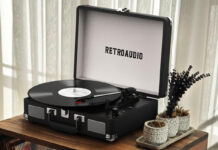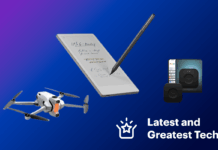
Looking for a cool, high tech gift idea? One that can help someone live a healthier lifestyle or make them love their smartphone that much more? Look no further than wearable technology, a category of gear that’s taken off this year, finally living up to the promise of wearing a mini computer instead of carrying one.
IDC is a research group that tracks consumer electronics sales and trends. They released a report this year on wearable technology showing the sales of smartwatches and fitness trackers have more than tripled compared to 2013 and are on track to hit over 110 million units by 2018.
So yes, wearable technology is hot.
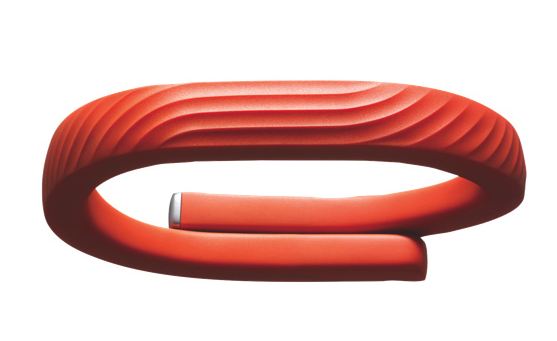
There’s good reason for the surge in popularity. The idea of wearable technology has been around for decades, but technology hadn’t quite caught up to ambition until recently. The result was huge chunks of plastic strapped to the wrist that were glorified watch calculators.
Today’s wearables bear little resemblance to those earlier attempts. Generally speaking, wearables fall into three camps.
- Augmented reality glasses. Think Google Glass, with variations like ski goggles with a heads-up display. You could also slot action cameras like Go-Pro in here —they aren’t really “Smart” but they’re definitely wearable and some are connected.
- Fitness trackers. At this point, fitness trackers are by far the most popular form of wearable technology. They’re inexpensive, there’s a wide selection of devices (in a range of styles) and they work well. Fitness trackers from companies like Fitbit, Garmin and Jawbone are standalone devices with sensors to capture data like steps taken. Data is stored and displayed on the device and can also usually be uploaded to a PC or smartphone.
- Smartwatches. While a fitness tracker functions as a standalone device, most smartwatches rely on a Bluetooth connection to a smartphone for some of their key features. They also work in tandem with the phone to extend its functionality –displaying notifications, for example. Many of today’s smartwatches also run their own apps and the current crop often includes advanced health and fitness sensors.
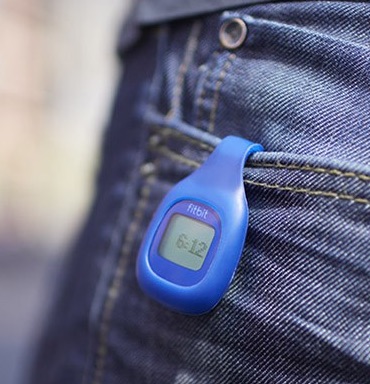 My Fitness Tracker Experience
My Fitness Tracker Experience
My wife and I began using fitness trackers several years ago. We chose Fitbit Zips –Fitbit was and still is the market leader in fitness trackers– based on their reputation, cost and the discrete clip-on form factor. The Zip is essentially a pedometer, but a very precise pedometer
What we quickly learned is that a fitness tracker like this on its own is useful for tracking steps, but it’s the connectivity, apps and other products that made the Zip an invaluable part of our fitness routine.
The Zip automatically uploaded data to our iPhones and from there the raw numbers turned into graphical information that showed everything from calories burned to patterns and trends in our activity. As a next step, we replaced our bathroom scale with Fitbit’s Aria smart scale. The Aria is also connected and it automatically updates weight and body fat information to the Fitbit account.
Now we could start seeing real-time physical proof of a correlation between activity (or inactivity) and weight.
The next step was an app that keeps track of dietary information. We use My Fitness Pal because it is fully integrated with Fitbit, it has a massive database of nutritional information for Canadian brands and a quick scan of a product’s bar code with the iPhone automatically populates accurate nutritional information.
I put the Zip to good use on my summer vacation, tracking steps (I was averaging 17,000 a day by walking wherever possible) to justify treats like the fried dough stand…
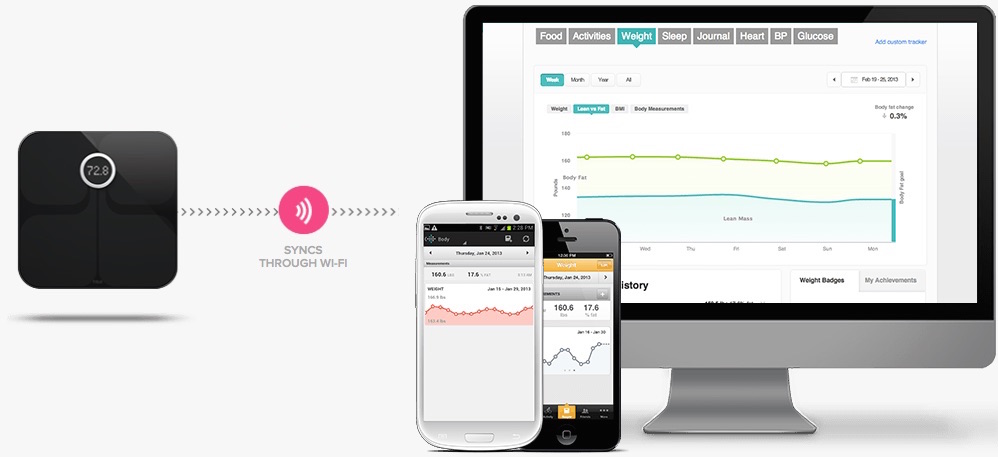
We’re looking forward to upgrading to the , but for someone who wants to see what the wearable thing is like, the Zip remains an inexpensive entry point. It uses a watch battery that lasts several months. It’s durable too –mine went through a wash cycle twice and survived.
 Hands on With a Smartwatch
Hands on With a Smartwatch
I’ve had the opportunity to test many smartwatches over the past year. While each had its own strongpoints, there are two that stood out based on my experience.
The first was the Pebble Steel. One of the appeals of Pebble is that it represents “the little guy.” In an industry dominated by consumer technology giants, the original Pebble smartwatch was a Kickstarter success that went on to become an instant market leader.
The reason the appeal of the Pebble has lasted is clever design. A black and white ePaper display (similar to that used by an e-reader) gave it week-long battery life when one day was the norm. Pebble also worked closely with developers to launch an app store, something that’s critical to long-term viability.
The Pebble Steel is a slicker looking version of the original Pebble. It’s available in stylish stainless steel and black steel finishes. It looks good, the app selection continues to grow and it plays nice with both iOS and Android, so which smartphone you own isn’t a deal killer.
My most recent review unit was Motorola’s Moto 360.
There has been a ton of buzz around this smartwatch because it’s one of the first to be powered by Google’s new Android Wear –an OS designed from the ground up for wearables. And the Moto 360 was also the first mainstream smartwatch with a round watchface. This is a big deal, because the rectangular form used by previous smartwatches instantly gave them away as something different. The Moto 360 can pass as a traditional wristwatch.
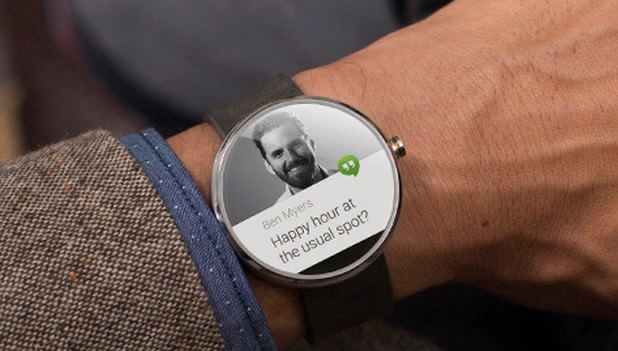 ˜
˜
It was with the Moto 360 that I finally got the full impact of what a smartwatch can do. It wasn’t just a cool thing on my wrist (although with that bright LCD display and round screen, it definitely was cool), it illustrated how well wearable technology can complement a smartwatch.
While I was in the living room sipping a coffee and reading, the Moto 360 displayed notifications (e-mails and messages) from the Android smartphone sitting in my kitchen. A glance at my wrist and I had all the info. With a quick “OK Google” I could dictate a note to myself and it was e-mailed to me as text. As I walked around the house, the Moto 360 was also tracking my footsteps and my heart rate was just a tap away.
With their ability to install and run apps, the functionality of a smartwatches continues to grow.
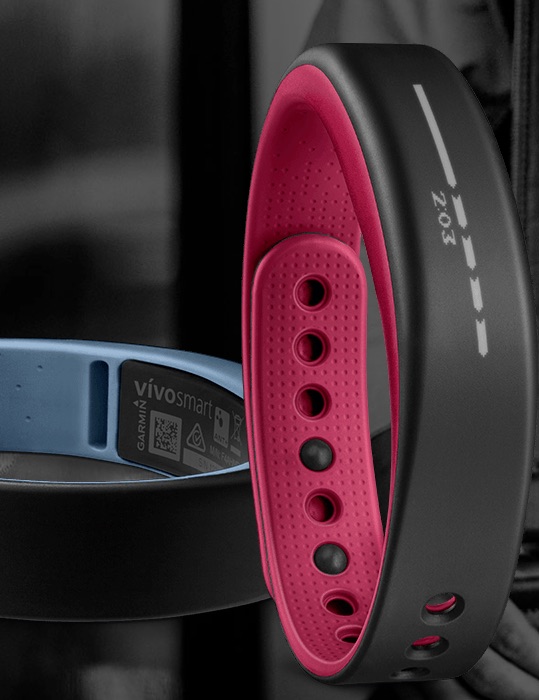 Why Go Wearable?
Why Go Wearable?
The past few years of the wearable market reminds me very much of the state of the smartphone market circa 2007. Smartphones were considered business tools and few people could wrap their head around why anyone would want a personal smartphone.
Then Apple released the iPhone –a smartphone with a colour display, multitouch and the ability to run apps– and we all know what happened.
Wearables are hitting that critical point where they’re beginning to explode in popularity. They aren’t just curiosities any longer, they’re showing up everywhere. They are developing healthy app ecosystems, ensuring new functionality is a download away. And with the growing popularity of wearables comes choice —no matter what your price point, your favourite colour, your preferred mobile platform or what you would use such a device for— there’s a wearable for you.
If you’re interested in tracking your health and fitness data—for personal training or for health concerns—your options are more powerful than ever before.

